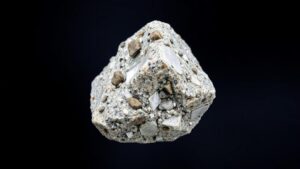Identifying Natural Vortex Zones in Streams for Gold Recovery
Identifying Natural Vortex Zones in Streams for Gold Recovery
The process of gold recovery from natural water bodies often hinges on identifying specific geological and hydrological features that accumulate gold particles. One such feature is the natural vortex zone, which can enhance the likelihood of finding gold due to its unique hydrodynamic properties. This article delves into the identification of these vortex zones, providing practical insights and examples that can aid in effective gold recovery.
Understanding Vortex Zones
A natural vortex zone in a stream is characterized by a swirling motion created by water flow, typically when it encounters obstacles such as rocks or bends in the stream bed. e zones are crucial for gold recovery because they tend to trap heavier materials, including gold. The physics behind this phenomenon is similar to that of whirlpools, where sedimentation occurs due to differences in fluid velocity.
Identifying Natural Vortex Zones
Several indicators can help identify natural vortex zones in streams:
- Stream obstructions: Large rocks, fallen trees, or debris can significantly alter the flow of water, creating whirlpool effects.
- Changes in water speed: Look for areas where the water slows down abruptly or diverts around obstacles.
- Decreased depth: Vortex zones often indicate a shallower area due to sediment accumulation.
- Deposits of heavier materials: Sand or gravel deposits downstream from obstructions can signal potential vortex zones.
Case Study: Gold Recovery in the Mississippi River
In a practical example from the Mississippi River, miners employed careful observation of water flow patterns to locate vortex zones created by natural bends in the riverbed. By setting up sluice boxes downstream of these zones, they effectively captured gold particles that became trapped within the accumulated sediment. This case illustrates the practical application of identifying and capitalizing on natural vortex zones in real-world scenarios.
The Role of Equipment in Vortex Zone Identification
Modern technology plays a significant role in stream analysis for gold recovery. Tools such as GPS, sonar imaging, and sediment trap studies can enhance the identification of vortex zones:
- GPS Technology: Helps map the exact positions of identified vortex zones, allowing for repeated exploration and monitoring.
- Sonar Imaging: Offers real-time visualization of submerged features, assisting in locating potential gold traps.
- Sediment Studies: Analyzing sediment composition helps confirm the presence of gold-particle accumulation.
Potential Questions and Concerns
Individuals interested in gold recovery might have several questions regarding this process:
- How do weather conditions affect vortex formation? Heavy rains can change flow patterns, potentially creating new vortex zones or altering existing ones.
- What legal considerations should be taken into account? Research local regulations concerning mining and gold recovery in natural water bodies to ensure compliance.
Actionable Takeaways
Identifying natural vortex zones can significantly enhance gold recovery efforts. Consider the following actionable steps:
- Conduct on-site investigations of water bodies, paying attention to the flow and obstacles present.
- Use modern technology to map and analyze potential vortex zones.
- Document findings through sediment collection and studies to better understand gold distribution in the stream.
By employing these strategies, both amateur and professional gold seekers can improve their chances of successful recovery by effectively identifying and utilizing natural vortex zones in streams.



